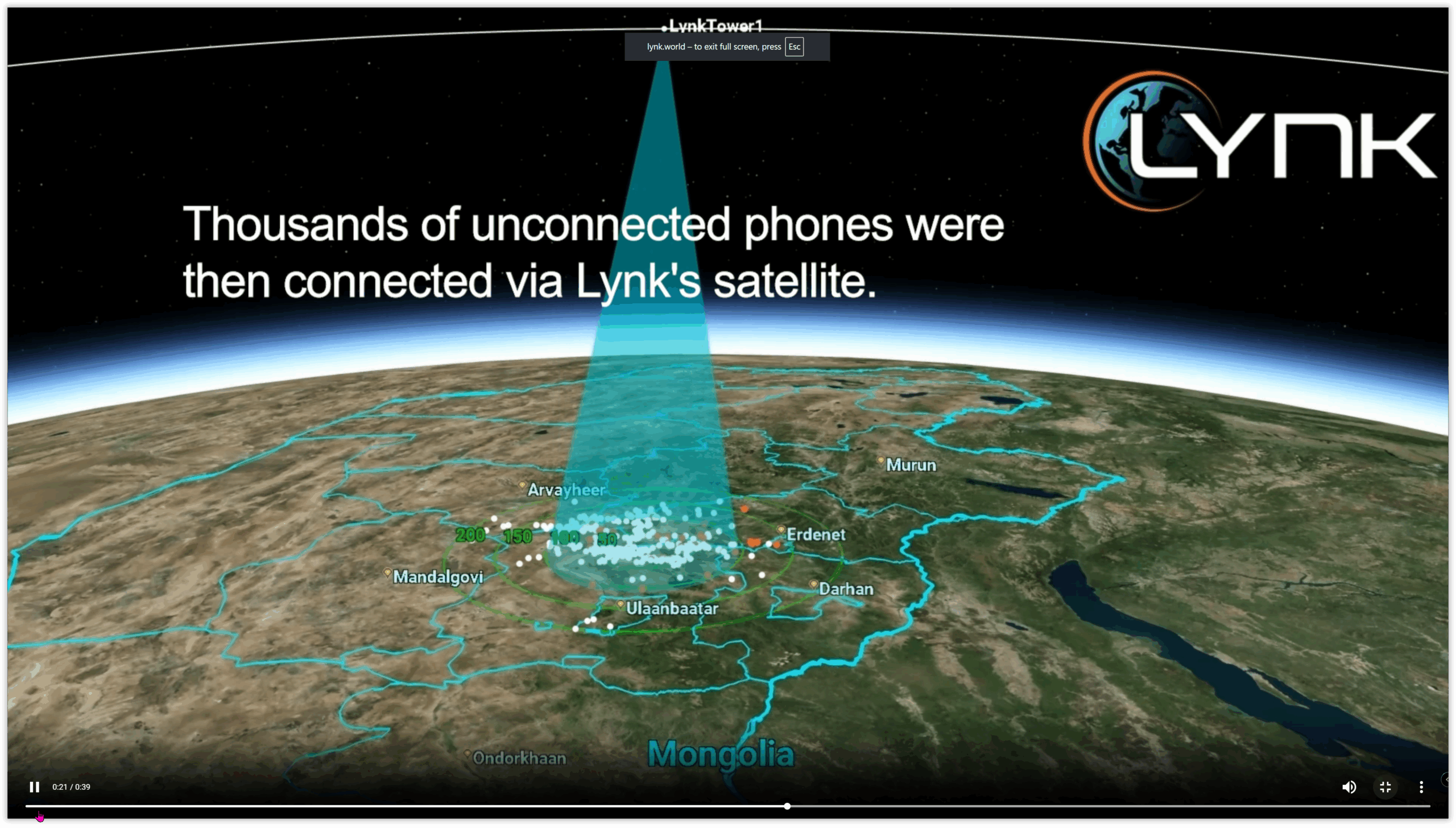 Lynk’s D2D messaging trial in 2022 (Credit: Lynk)
Lynk’s D2D messaging trial in 2022 (Credit: Lynk)
The Falklands’ telecommunications landscape will experience a significant shift with the emergence of Low Earth Orbit (LEO) satellite Direct-to-Device (D2D) technology. D2D promises to enhance connectivity in Camp and islands, support tourism, improve resilience, and reduce costs. However, it is not a replacement for existing 4G/5G networks, as true reliability comes from a diverse mix of terrestrial and satellite infrastructure. This short post explores the potential of D2D, the leading global players, and why a balanced, future-proof strategy is essential for the islands’ long-term connectivity.
D2D technology refers to the capability of LEO satellites to connect directly with consumer devices, typically smartphones, IoT devices, or other consumer hardware, without needing specialised satellite phones or bulky external antennas.
Key Features of D2D Technology Relevant to the Falkland Islands
There are some downsides to the use of D2D, which we will talk about later, but there are many overwhelmingly positive upsides, which mean D2D will inevitably find its place in the islands in due course.
-
Camp & island Coverage: D2D significantly improves connectivity in remote areas of Camp, islands and maritime geography.
-
Cost Efficiency: For consumers, businesses, government, and local telecom providers, D2D represents a far more cost-effective solution compared to traditional terrestrial options such as WiMax or LTE point-to-point links currently used in the Falklands.
-
Smartphone Compatibility: D2D technology will work seamlessly with modern smartphones designed for D2D, requiring no hardware modifications.
-
Interoperability: With compatible smartphones, D2D will fully integrate with terrestrial infrastructure, including 4G and 5G mobile networks, ensuring smooth operation across technologies.
-
Resilience & Reliability: Provides a backup communications channel during natural disasters, power outages, or submarine cable failures, ensuring continuity of critical services as well as during emergencies when terrestrial networks are unreliable or unavailable.
-
Scalability: Can rapidly expand coverage without building expensive physical infrastructure such as towers.
-
Environmental Sustainability: Minimises the need for physical towers or new cabling, lowering environmental impact, a substantial benefit in ecologically sensitive regions like the Falklands.
-
Tourism & Economic Growth: Enhances the experience for tourists who expect reliable connectivity, supporting the local economy and encouraging longer stays.

Who are the Leading Companies in the race?
It is still early days, but a wave of global tech leaders is racing to bring D2D satellite connectivity to market.
Apple has set the pace with its Emergency SOS via satellite feature, powered by a partnership with Globalstar. This service, now available on iPhones, allows users to send emergency messages even in the most remote areas.
AST SpaceMobile has the ambition of delivering true 4G and 5G broadband directly to ordinary smartphones. Backed by partners like AT&T and Vodafone, and with its BlueWalker satellites already in orbit, AST is positioning itself as a leader in full-service space-based mobile networks.
SpaceX’s Starlink has teamed up with T-Mobile in a landmark collaboration. Their vision begins with universal text coverage and is set to expand into voice and data.
Lynk Global is proving that satellite texting is more than a promise. The company has already demonstrated real-time messaging from space, making it the first to show what low-bandwidth, space-enabled connectivity can achieve in practice.
Omnispace is building a hybrid satellite–terrestrial network focused on IoT and global 5G standards, targeting industries that depend on seamless machine-to-machine and sensor connectivity.
Huawei has been an early mover in bringing satellite technology to consumers. In China, its latest smartphones already include built-in satellite communication for emergency texting.
Iridium. Of course, we should not forget the trusted and ubiquitous Iridium, though they are still focused on geo-stationary satellites rather than LEOs, but that will change.
There are several others, so together, these companies are trying to redefine what “always connected” really means.

All the Eggs in One Basket? Absolutely Not.
Just as Starlink should not be seen as a complete replacement for the Falklands’ terrestrial broadband infrastructure, D2D will not, and should not, be viewed as a complete substitute for the islands’ existing network. There are two key reasons for this caution:
- Single Provider Dependence
If only one LEO operator gains regulatory approval or market dominance, the Falklands risk trading Sure’s terrestrial monopoly for a space-based one. In that case, prices, service quality, and terms would all be dictated by overseas providers rather than by local oversight. - Resilience and Reliability
True resilience comes from diversity: fibre, satellite, terrestrial mobile, and microwave links all working together. Over-reliance on D2D would make the islands vulnerable if satellites fail, whether through solar storms, technical faults, regulatory hurdles, or commercial disputes. We have already witnessed a major global Starlink outage, a reminder that no network is ever 100% reliable.
The key takeaway is clear: LEO-based broadband and D2D can and should be part of the mix, but it must sit within a well-designed, balanced telecommunications strategy that ensures both resilience and consumer protection.

One Reply to “D2D is Coming: The Next Revolution in Falklands Connectivity?”